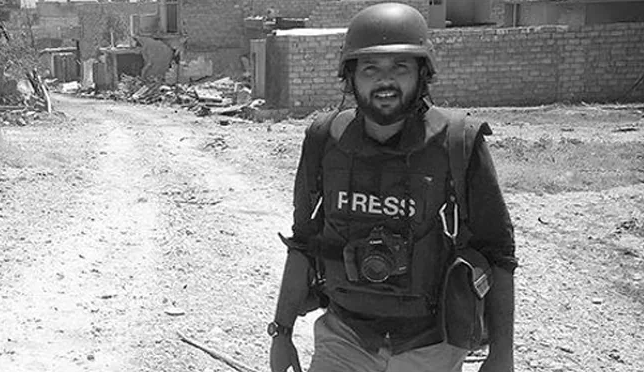
Danish Siddiqui, who was killed in Afghanistan on July 16 while covering the conflict there, will be remembered as a fearless photojournalist who chronicled the contemporary story of India from anti-CAA demonstrations, migrant crisis during the hurriedly announced Covid-19 lockdown to the collective tragedy of India during Covid-19 second peak.
Shadab Farooq | TwoCircles.net
NEW DELHI – Danish Siddiqui, India’s first Pulitzer Prize winner in feature photography who rose to the top of his profession while documenting conflict, carnages, and human suffering, was killed in a crossfire between Afghan forces and the Taliban on July 16. Siddiqui was reporting the war in Afghanistan for Reuters. He died in the line of duty.
Siddiqui will be remembered as a fearless photojournalist who chronicled the contemporary story of India from anti-CAA demonstrations, migrant crisis during the hurriedly announced Covid-19 lockdown to the collective tragedy of India during Covid-19 second peak.
He was part of a team, with Adnan Abidi, that won the Pulitzer Prize for Feature Photography in 2018 for a series of images depicting Myanmar’s Rohingya refugee crisis, which the judging committee called “shocking photographs that exposed the world to the violence Rohingya refugees faced while escaping Myanmar.”
“While I enjoy covering news stories – from business to politics to sports – what I enjoy most is capturing the human face of a breaking story,” Siddiqui stated in his Reuters profile. “I shoot for the common person who wants to see and feel a story from a place where he can’t be present himself”.
In his Reuters profile, Danish stated, “My earliest memories of photography are a camera borrowed from a neighbour, black and white rolls of film bought with half my pocket money, and a school hiking trip in the Himalayas”.
From 2005 to 2007, Siddiqui studied MA in Mass Communication at Jamia Millia Islamia’s A.J.K. Mass Communication Research Centre (JMCRC), where he received formal photographic training. Siddiqui began his career as a television reporter after graduating from Delhi’s Jamia Millia Islamia. Since 2010, he was working with Reuters.
The journalist alumni of Jamia Millia Islamia’s AJK Mass Communication Research Centre (AJKMCRC) expressed their condolences to the family of Siddiqui.
A war photographer par excellence, Siddiqui has covered the Iraq conflict, the Nepal earthquake, Hong Kong riots, and Sri Lanka’s Easter Sunday bombings and the clampdown in Kashmir following the stripping of its semi-autonomous status by the Government of India in 2019. From documenting the Delhi riots to the most recent shots exposing the intensity of the second Covid-19 wave, Siddiqui’s photographs were considered key works in contemporary India.
“Apart from daily features and “bread and butter” assignments, I love shooting in-depth features across the country,” Danish Siddiqui’s Reuters bio stated.
In a social media post, Bilal Zaidi, one of Siddiqui’s childhood friends, remembers him in the following words, “I recall taking Danish home when a local bully broke his hand with a cricket bat. We were both 8-9 years old at the time, and we used to play cricket together in our Jamia Colony.”
Siddiqui’s childhood was in and around Jamia Millia Islamia, where his father worked as a professor at the Faculty of Education before retiring. Before joining AJKMCRC, he was a JMI Economics graduate.
Graduating from Jamia Millia Islamia, Siddiqui worked as a correspondent for the Hindustan Times newspaper and the TV Today channel, before joining Reuters.
Md Meherban, a photojournalist and a Jamia alumnus, recalls what Danish Siddiqui used to say to him when they were on assignment together. “We should always make the story the hero and make sure that we don’t overshadow the truth with our personalities. Always be brave enough to convey the truth no matter how uncomfortable it might make the people around you,” Meherban wrote in a Facebook post.
Siddiqui’s final account on July 13 is a powerful telling of the combat on the outskirts of Kandahar in Afghanistan, which is a testament to his courage and brave work. While the Humvee he was riding in was being attacked, he documented an Afghan Special forces’ extraction mission.
In his last Twitter post, Siddiqui wrote, “Afghan Special Forces, the elite fighters are on various frontlines across the country. I tagged along with these young men for some missions. Here is what happened in Kandahar today while they were on a rescue mission after spending the whole night on a combat mission.”

